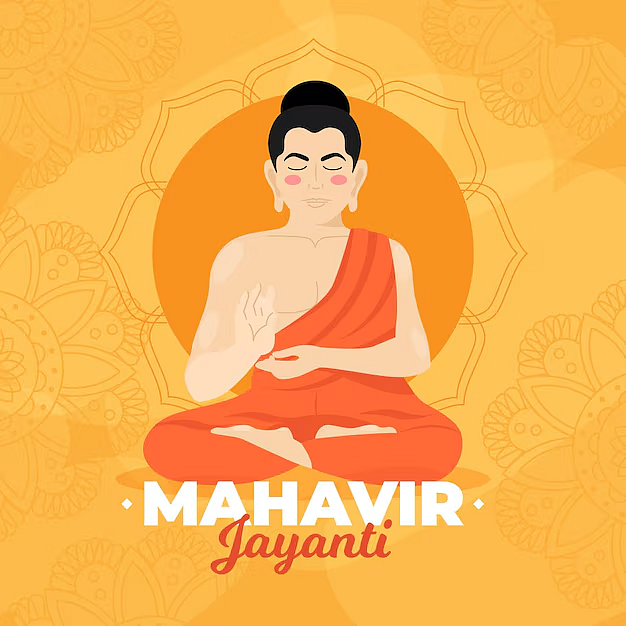Sri Mahavira Jayanti, a day that marks the birthday of Lord Mahavira, the 24th and last Tirthankar of the Jain faith, is a merry and spiritually valuable occasion for all Jains around the world. It's the day to observe the teachings of Mahavira, contemplate his life, and take spiritual guidance from him. Let라이브 바카라 check the core observances that are a part of Mahavir Jayanti.
Lord Mahavira: The Founder of Jainism's Philosophy
Born as Vardhamana in Kundagrama, Bihar, around 599 BCE, Mahavira belonged to a royal family. However, at the age of 30, he renounced his worldly possessions and embarked on a life of asceticism. For twelve years, he practiced intense meditation and endured severe physical hardships, ultimately achieving enlightenment (Kevala Jnana). He then became known as Mahavira, meaning "Great Hero," and began preaching the principles of Jainism, which emphasized self-discipline, non-violence, and the pursuit of spiritual liberation.
Rituals and Traditions:
Fasting and Abstinence:
Observation of fasting is the central pillar of the Mahavir Jayanti celebration. The Jains may take the determination of this calibre and go on a complete fast, which includes abstinence from all food and water for a full 24 hours.
A complete fast would be an option for some people as this would require them to consume nothing or just a simple meal, while others may choose partial deprivation, a diet of fruits and vegetables.
Serving a dual purpose, fasting is considered cleansing of both body and mind to immerse into the act of spiritual reflection. It pays respect to Mahavira라이브 바카라 ascetic practices.
Prayers and Puja
Shrines dedicated to Jainism give a multi-coloured appeal on the day of Mahavir Jayanti. Devotees get themselves together for particular prayer sessions and Puja.
The day often begins with Prabhat Pheris, early morning processions where devotees sing devotional hymns (bhajans) and spread messages of peace and harmony through the streets.
Abhishekam is a sacred ritual that involves the ceremonial bathing of the idol of Lord Mahavira with milk, water, and other auspicious substances. It symbolizes purification and reverence.
By means of chanting hymns that are devoted to Mahavira, meditating on his teachings, as well as praying for peace and freedom all these things are common practices.
Processions and carriages are also very common for marking the occasion. Some places celebrate grand processions with statues of Saint Mahavira being taken around on covered chariots.
On the way, faithful followers sing some devotional songs and hymns as they walk in the street, creating a festive atmosphere. Such parades are not only great for celebrating the teachings of Mahavira but are also a perfect medium for the propagation of the Jain values and principles to the people of the community.
Lectures and Spiritual Discourses
Mahavir Jayanti is a season in which one can indulge in spiritual learning and contemplation. Mahavira and his principles are constantly taught by Jain monks and nuns who deliver lectures and discourses on his life and teachings.
These discourses delve into the core principles of Jainism like ahimsa (non-violence), aparigraha (non-possession), and right conduct, inspiring devotees to lead more ethical and compassionate lives.
Charity and Community Service
Helping those in need is an important aspect of Jain's philosophy. On Mahavir Jayanti, Jains often engage in acts of charity and community service.
Donations are made to support the underprivileged, food is distributed to the hungry, and acts of kindness are encouraged.
By helping others, Jains embody the spirit of Mahavira's teachings and contribute to a more just and compassionate world.
Family Gatherings and Festivities
While spiritual reflection is the focus of this festival, family gatherings also have to take place under the pretext of observing common beliefs.
Following fast overserving, families gather and share a simple vegetarian meal celebrating the occasion together.
Some communities prefer to participate in cultural programs with music and dance performances marking the festival, which adds a hint of vibrance to the day.
Significance of these Traditions:
Not only Mahavir Jayanti is a set of traditions but it revolves around more than just the common practices. It serves as a way for Jains to:
Connect with their faith: Engaging in these celebrations, Jains reinforce their faithfulness to the religion and confirm their obedience to the Jain way of life.
Honor Lord Mahavira: These rituals are a reverence to the life and teachings of Mahavira, signifying gratefulness to his direction on the peaceful road to liberation.
Practice Jain values: During fasts, prayers, and charities, Jains follow the values of non-violence, compassion, and detachment in which they believe.
Spread awareness: The parades, processions and all community events create public interest in Jainism and its message, which is about peace and non-violence.
Observing Mahavir Jayanti as a festival bears no confines of one day. It is the symbol of the contribution of Lord Mahavira to the world and a call for us all to adopt the practices of ahimsa, right conduct, and spiritual freedom that he embodied.
Follow 바카라 Experiences:
| | |















